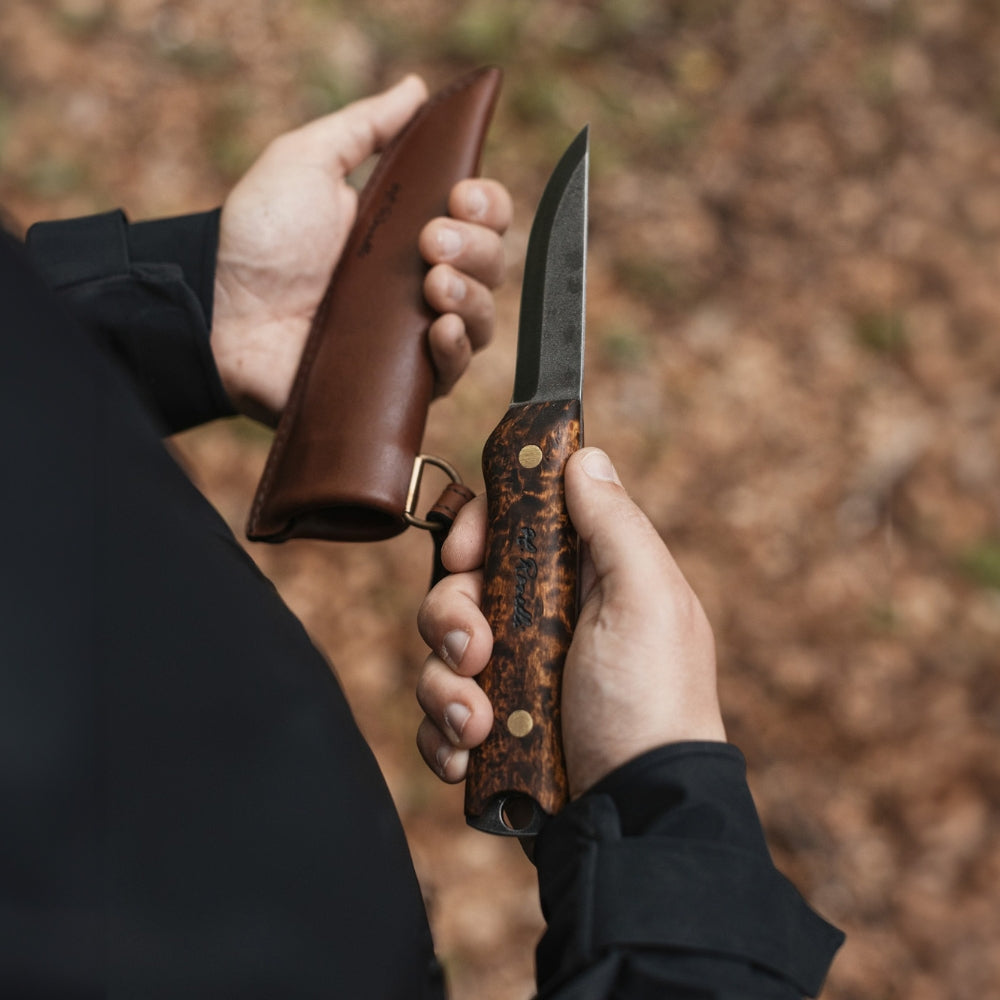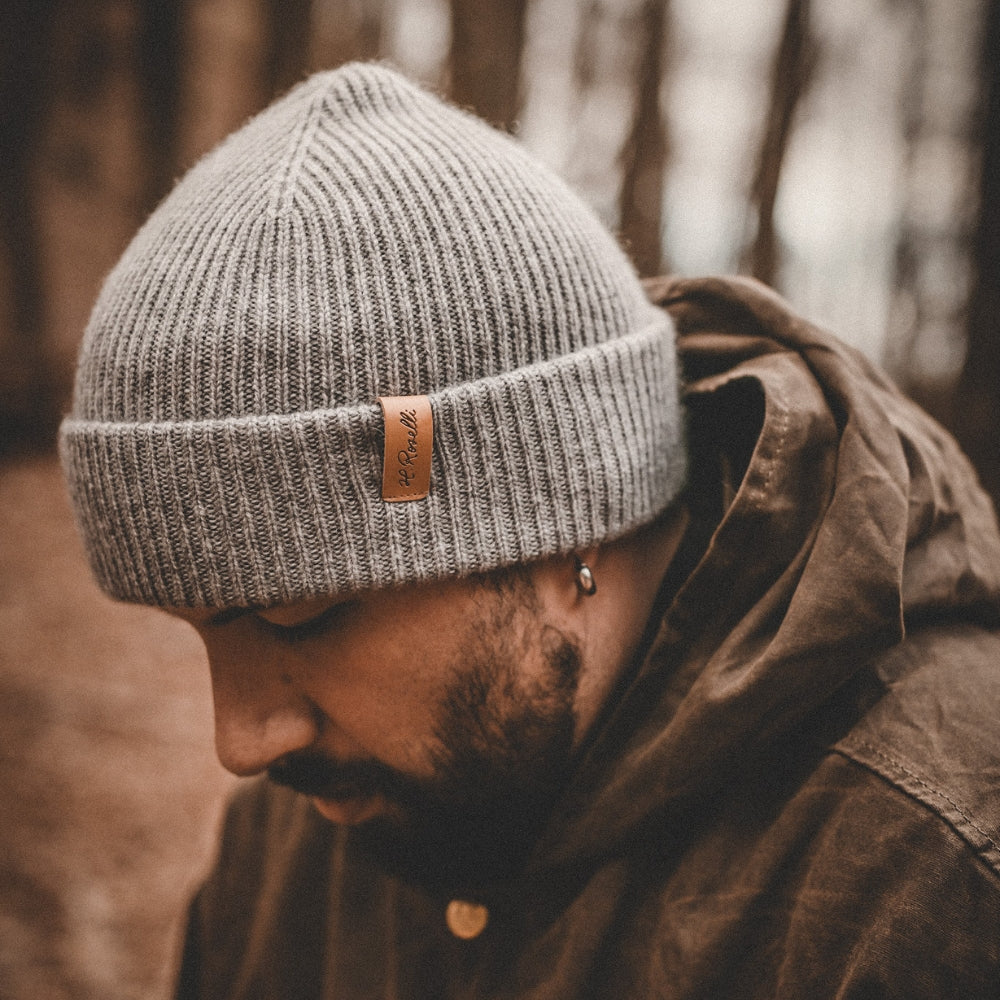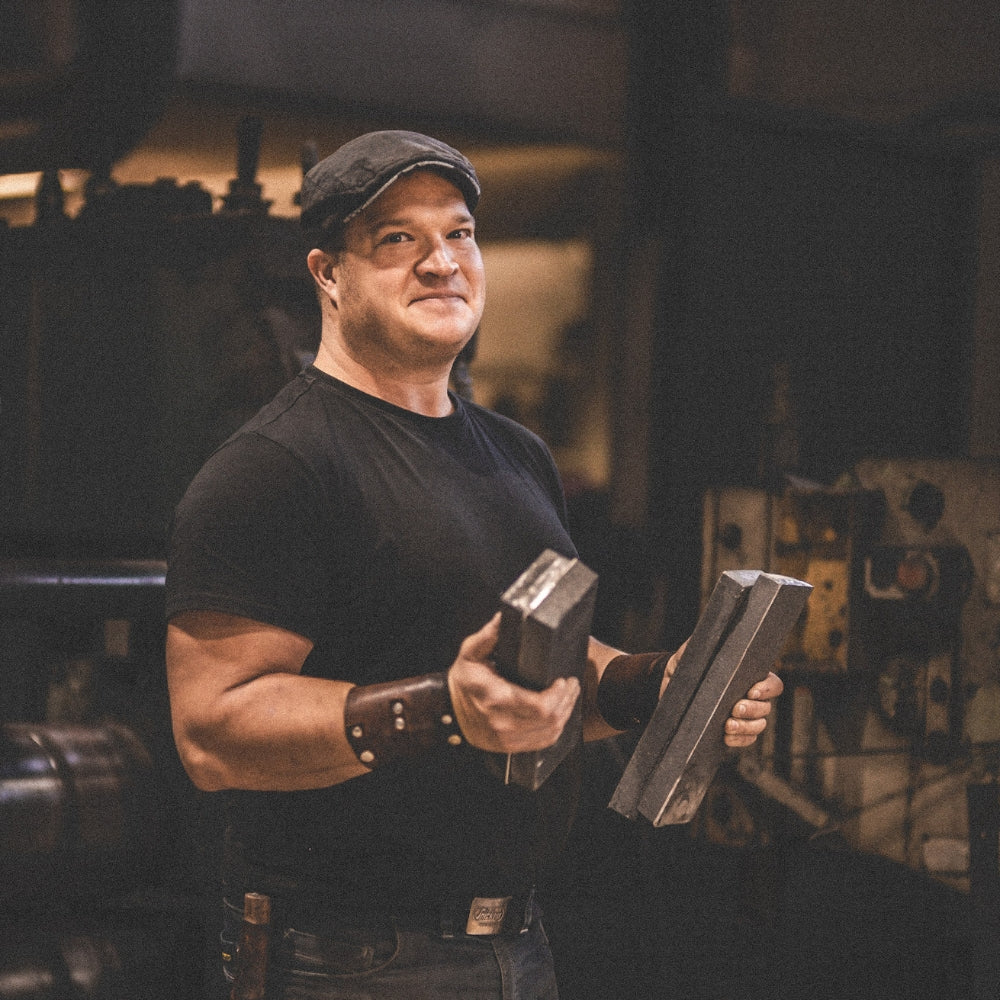Stabiloitu puu on suosittu materiaali puukkojen ja veitsien kahvoihin, koska se on kestävä, pitkäikäinen ja näyttää hyvältä. Stabilointiprosessi sisältää puun kyllästämisen hartsilla, joka täyttää puun huokoset tehden siitä vakaamman ja vastustuskykyisemmän lämpötilan ja kosteuden vaihteluille.
Näin stabiloimme puuta veitsen kahvoja varten vaihe vaiheelta:
- Valitse puu: Valitse pala loimukoivua, jossa on houkutteleva syykuvio ja väri. Puu tulee olla kuiva sekä halkeamaton, oksaton ja virheetön.
- Leikkaa puu: Leikkaa puu haluttuun kokoon ja muotoon veitsen kahvaa varten.
- Kuivaa puu: Kuivaa puu uunissa tai ilmakuivaa se, kunnes kosteuspitoisuus on 6–8 %. Tämä vaihe on tärkeä, sillä ylimääräinen kosteus voi häiritä stabilointiprosessia.
- Valmista stabilointihartsi: Sekoita hartsi valmistajan ohjeiden mukaan. Hartsi on yleensä kaksikomponenttinen epoksi, joka sekoitetaan juuri ennen käyttöä.
- Tyhjiökammio: Aseta puu tyhjiökammioon ja poista ilma luodaksesi tyhjiön. Tämä vaihe on tärkeä, jotta hartsi pääsee tunkeutumaan syvälle puuhun.
- Kyllästä puu: Kun tyhjiö on luotu, kaada stabilointihartsi kammioon. Tyhjiö vetää hartsin puun sisään täyttäen huokoset ja stabiloiden puun.
- Hartsin kovettuminen: Kun puu on täysin kyllästetty hartsilla, poista se tyhjiökammiosta ja anna hartsin kovettua. Kovettuminen voi kestää useita tunteja tai päiviä riippuen hartsin tyypistä ja ympäristön lämpötilasta.
- Viimeistely: Kun hartsi on kovettunut, hio puu haluttuun muotoon ja sileäksi. Stabiloitu puu on nyt valmis käytettäväksi veitsen kahvoissa tai muissa koriste-esineissä.







